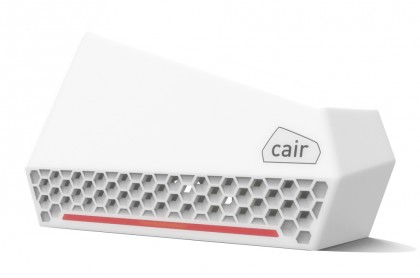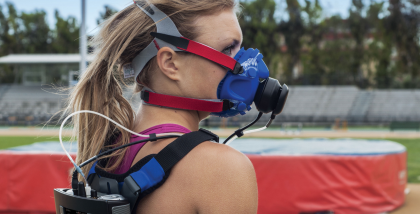How our phones will become our doctors
As sensor technology advances, our phones will become increasingly important diagnostic aids

What our sweat can tell us
The next focus for smartphone health integration is digging deeper into the new kinds of information that can be collected. While the step-counting and heart-rate monitoring that many devices now perform are useful, our phones will increasingly be capable of collecting data that's even more useful.
Earlier this year, engineers from the University of California, Berkeley, developed a new sensor that can measure the metabolites and electrolytes in sweat.
By combining these readings with skin temperature data, the sensor is able to alert the user to all kinds of issues, like fatigue, dehydration and dangerously high body temperatures.
"Human sweat contains physiologically rich information, thus making it an attractive body fluid for non-invasive wearable sensors," says principal investigator Professor Ali Javey. "However, sweat is complex, and it is necessary to measure multiple targets to extract meaningful information about your state of health."
The more data points that can be measured, the more meaningful the information that can be gathered.
Like sweat, our breath can also provide useful insights into our health. Devices containing sensors that analyse the composition of your breath are already available for athletes and health professionals, and could feasibly be coming to smartphones too.
For instance, Cosmed's K5 can measure metabolic parameters including oxygen consumption, ventilation, heart rate and energy expenditure all from sensing your breath – and could easily be plugged into a phone in the future rather than a bulky backpack.
Get daily insight, inspiration and deals in your inbox
Sign up for breaking news, reviews, opinion, top tech deals, and more.

Breezing ($350, around £238/AU$462) is a small handheld device that measures the composition of breath using indirect calorimetry – the measurement of oxygen consumption rate and carbon dioxide production rate – and is designed to give users a better understanding of their health and help them lose weight.
The data gained is used to gauge measurements such as Resting Metabolic Rate (RMR) and Resting Energy Expenditure (REE), which when paired with the app can tell you all kinds of things about your current state of health – and its compact nature points to a place in your phone in the future.
All in the mind
In the future our phones won't just be able to keep tabs on our physical health – they'll be able to monitor our emotional wellbeing too.
There are generally two ways to collect emotional data: sentiment analysis software (working out what we really mean by what we say) and biometric data from wearables – and emotion-tracking wearables are already hitting the consumer market.
Feel is a wristband designed to give you a better understanding of your emotions and stress levels, using sensors that record biometric data such as blood volume pulse and skin temperature. This data is fed back to the app, which will then suggest actions you can take to elevate or alleviate certain moods.
However, current emotion-sensing tech is only really possible when sensors can be placed against your skin for an extended period of time, which means these sensors won't be coming into your phone in the next year at least as brands work out how holding your handset more briefly can give the same insights.
In time, a wearable like Feel could send information about your emotions to your device, which could then be paired with data from other sensors in order to better understand what it is that makes you think and feel a certain way.
For example, an emotion-reading sensor might tell your phone that you're stressed, enabling your handset to then use its other sensors to paint a more accurate picture of possible causes.
Perhaps you get stressed when air quality is low. Maybe your commute is the time when you appear to be the most sad. Or perhaps you're happiest when in a certain location – although you'd probably be able to work that one out for yourself.
Becca is a contributor to TechRadar, a freelance journalist and author. She’s been writing about consumer tech and popular science for more than ten years, covering all kinds of topics, including why robots have eyes and whether we’ll experience the overview effect one day. She’s particularly interested in VR/AR, wearables, digital health, space tech and chatting to experts and academics about the future. She’s contributed to TechRadar, T3, Wired, New Scientist, The Guardian, Inverse and many more. Her first book, Screen Time, came out in January 2021 with Bonnier Books. She loves science-fiction, brutalist architecture, and spending too much time floating through space in virtual reality.
